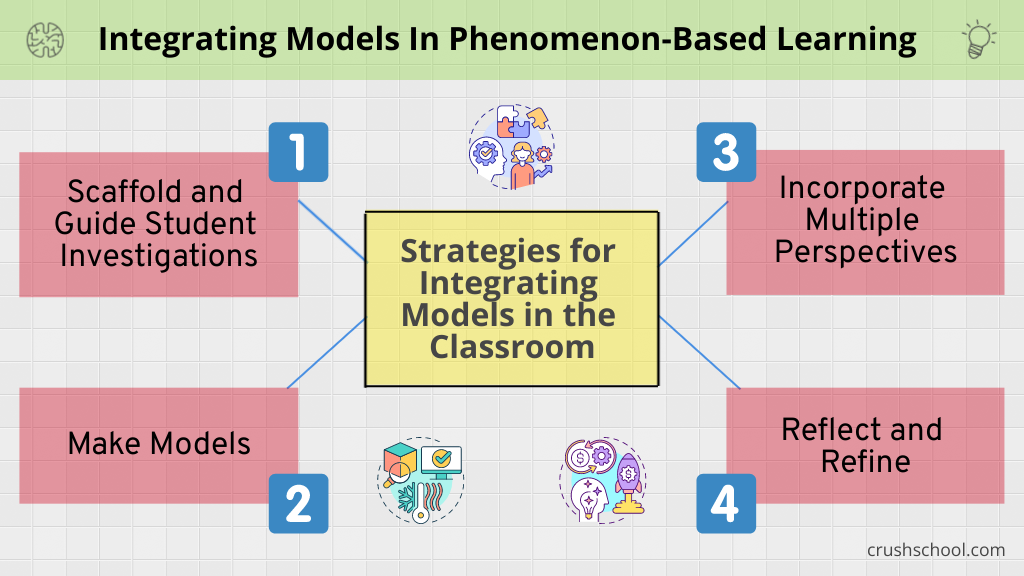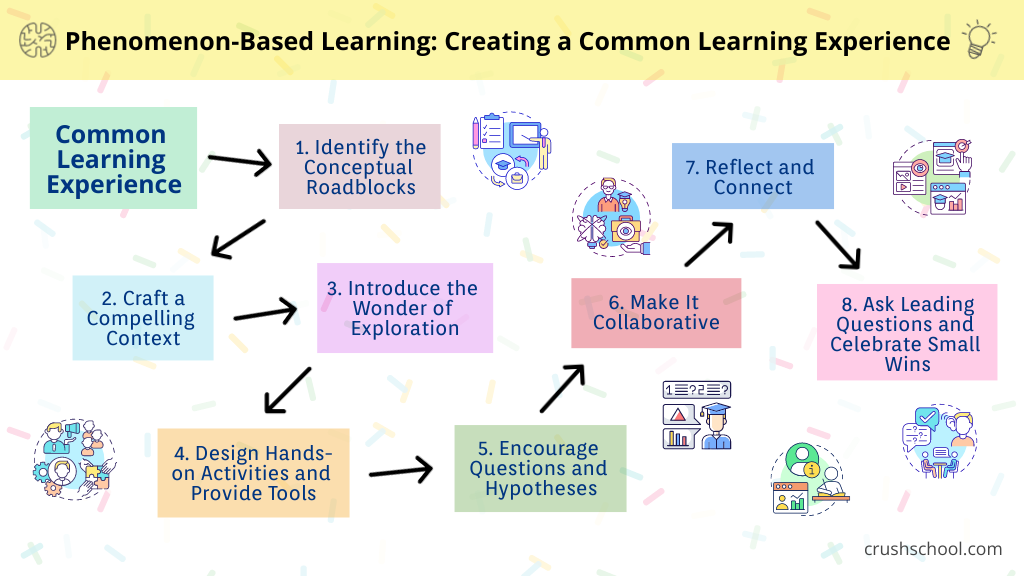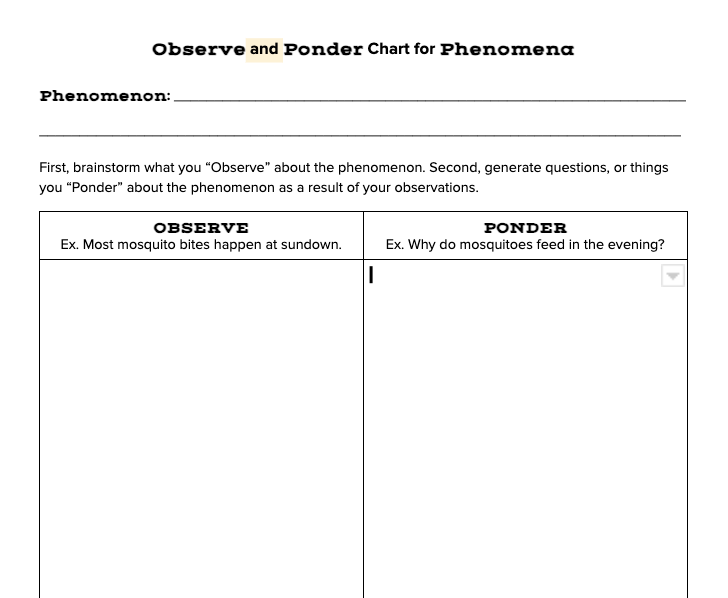Phenomenon-Based Learning: Making Models for Understanding
In the realm of modern education, the shift towards student-centered, inquiry-based approaches has taken center stage.
Phenomenon-Based Learning (PnenBL) is one such transformative method that encourages students to explore real-world phenomena and solve authentic problems. At the heart of this approach lies the strategic use of models - powerful tools that enable learners to understand, analyze, and explain complex concepts.
Phenomenon-Based Learning: A Quick Recap
Phenomenon-Based Learning shifts the focus from learning individual subjects separately to an interdisciplinary exploration of real-life problems though the use of real-world phenomena. Instead of studying isolated topics, PhenBL requires students connect knowledge from multiple disciplines. This develops critical thinking, collaboration, communication, and problem-solving skills.
The Power of Models in Phenomenon-Based Learning
Models are simplified (but not always simple) representations of complex phenomena that help students conceptualize and make sense of abstract ideas. Integrating models into PhenBL provides various benefits that enrich the learning experience.
Better Understanding through visuals and manipulatives
Models offer a visual representation of phenomena, making abstract concepts more accessible to students. Whether it's a physical model, a diagram, or a digital simulation, these visual aids enhance comprehension and retention.
Connecting Theory to Reality
Models bridge the gap between theoretical knowledge and real-world applications. They allow students to observe how abstract concepts manifest in practical situations, reinforcing the relevance of their learning.
Promoting Inquiry and Exploration
Models encourage students to investigate and ask questions about the phenomenon being studied. They serve as a starting point for inquiry, sparking curiosity and driving learners to explore further.
Encouraging Active Learning
When students engage with models actively - manipulating variables and observing outcomes - they take ownership of their learning. This hands-on approach cultivates a deeper understanding of the phenomenon.
Fostering Collaboration
Models provide a common reference point for students to collaborate and discuss their findings. Sharing their interpretations and observations around a model encourages peer learning and collaboration.
Facilitating Communication
Models create a shared language for students to use to communicate complex ideas. They can present their insights more effectively, strengthening their ability to express scientific concepts clearly.
Developing Scientific Reasoning and Logic
Analyzing and interpreting models help students develop essential scientific reasoning skills. They learn to identify patterns, draw conclusions, and make predictions based on evidence. This teaches them logical thinking they can apply when they encounter new information in school, work, and personal life.
Strategies for Integrating Models in Phenomenon-Based Learning
Scaffold and Guide Student Investigation
Provide initial guidance on the types of models, how to make them, and how to use them. Then, gradually shift toward student-driven investigations and model-making. Allow them to make and manipulate models in their groups to help lead students to their own discoveries and conclusions. Check out (and use as you like) this lesson on models I created.
Make Models
Give students repeated opportunities to create their own models as they work on solving phenomena throughout the school year. Drawing, building prototypes, or designing digital simulations are hands-on experiences that aid learning and develop creativity.
Incorporate Multiple Perspectives
Encourage students to explore different models that might represent the same phenomenon before settling on one. Better yet, challenge them to analyze and combine various models. Such comparisons help develop a deeper understanding of concepts.
Reflect and Refine
Allow students to interact with other students’ models. This allows giving and receiving feedback and facilitates reflective discussions. Encourage students to share insights, challenge assumptions, and refine their models and understanding of ideas based on evidence they collected and observations they received from others.
Models Build Skills and Awareness
Integrating models in Phenomenon-Based Learning leads to more dynamic and engaging educational experiences. As students explore real-world phenomena and make and use models, they develop a deeper appreciation for the interconnectedness of knowledge and the wonders of the world. By fostering curiosity, critical thinking, collaboration, and problem-solving, models become powerful tools that empower students to embrace the complexities of the universe and become lifelong learners.
Sign up for my Teaching Tips, Resources, & Ideas Newsletter to get the next article Modeling Tools for Phenomenon-Based Learning when it drops. It’s totally free.
BOOKS & TOOLS
- September 2025 2
- August 2025 5
- July 2025 4
- June 2025 2
- August 2024 2
- July 2024 2
- June 2024 1
- October 2023 1
- September 2023 3
- August 2023 6
- July 2023 6
- July 2022 2
- June 2022 1
- November 2020 3
- October 2020 3
- April 2020 1
- March 2020 5
- July 2019 1
- June 2019 1
- April 2019 1
- January 2019 1
- November 2018 3
- October 2018 2
- September 2018 1
- August 2018 8
- July 2018 11
- June 2018 4
- May 2018 5
- April 2018 2
- March 2018 4
- February 2018 5
- January 2018 3
- December 2017 1
- November 2017 5
- October 2017 7
- September 2017 6
- August 2017 5
- July 2017 3
- June 2017 10
- May 2017 7
- April 2017 7
- March 2017 15
- February 2017 12
- January 2017 13
- December 2016 15
- November 2016 8
- October 2016 7
- September 2016 12
- August 2016 14
- July 2016 10
- June 2016 13
- May 2016 10
- April 2016 8
- March 2016 5
- February 2016 7
- January 2016 6
- December 2015 5
- November 2015 8
- October 2015 2

















